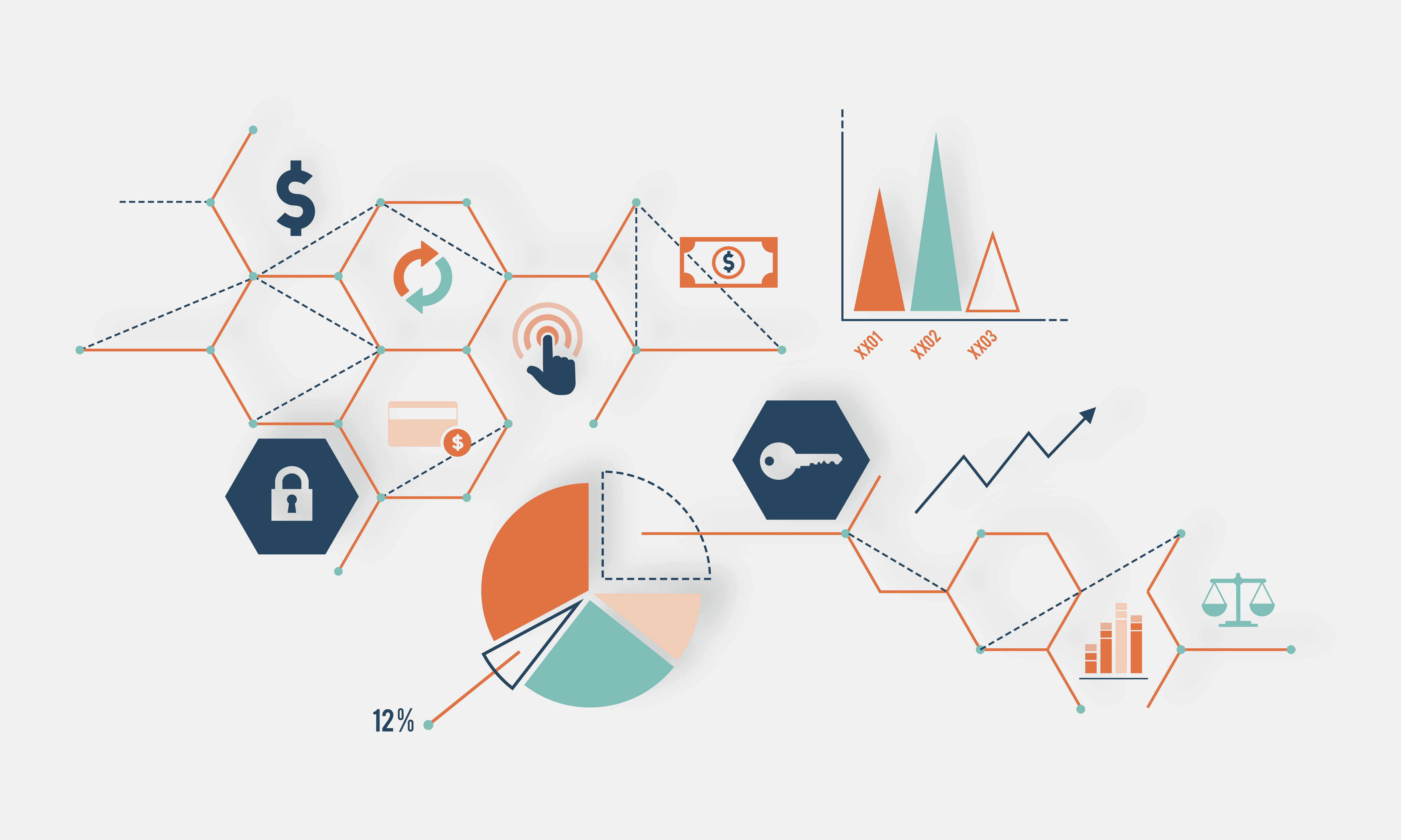PRIVACY IS MYTH
What are the most significant security threats associated with social media platforms? And what steps can users take to safeguard their profiles and the information they publish? This blog post will break down the current state of data privacy on social media and outline key actions to avoid data exposure.
In the age of constant connectivity, smartphones, wearables, and the Internet of Things (IoT), customer data is being collected right around the clock. Computers can identify your voice through a microphone, can recognize your face through a camera eye, can detail your biometrics through a wearable device, can trace your internet browsing history through cookie technology, can pinpoint your exact location through GPS tracking, can record your financial transactions every time you make a purchase. And with all this data, computers can create increasingly accurate profiles of a business’s customers, predict how they think, what their preferences are, and, most importantly of all, where they will spend their money. Let’s take a look at some of the ways that big companies achieve all this, the techniques they use to capture data, what they do with it, and how small- to mid-sized organizations can use the same techniques to improve their own businesses.

Let’s take a look at some of the ways that big companies achieve all this, the techniques they use to capture data, what they do with it, and how small- to mid-sized organizations can use the same techniques to improve their own businesses.
Social Media and Psychology
Every time a user open Instagram posts or reels, like, swipe or tweet something on our smartphones, we are increasing our digital dependency and our addiction dopamine, the neurotransmitter associated with pleasure. That could be causing the rising rates of anxiety and depression. Algorithms might seem helpful and mostly harmless to the average social customer, helping sift through content and deliver only “relevant” content rather than random posts. However, marketers that don’t fully understand what algorithms are or how they work will find themselves facing a constant struggle. Social algorithms aren’t as mysterious or spiteful as people might think. Social media algorithms are a way of sifting through content and sorting it, delivering only “relevant” content rather than random posts. Social networks prioritize which content a user sees in their feed first by the likelihood that they’ll actually want to see it. By default, social media algorithms take the reins of determining which content to deliver to you based on a user's behavior.
The function of an algorithm is to deliver relevant content to users. But under the hood, algorithms involve machine learning and data science. They’re capable of parsing data and ranking posts based on criteria that, quite honestly, the average marketer will probably never truly understand.
That said, algorithms aren’t giant question marks, though.Sometimes networks are transparent about what’ll help content rank and be seen as high-quality on their platform. Take the recent Facebook algorithm changes, for example. Facebook explicitly laid out some ground rules for accounts looking to stay in their algorithm’s good graces: prioritize meaningful conversations over transactions, stop engagement baiting and publish more native video content.
Earlier this year, Instagram clarified some points about their algorithm as users continue to call for a chronological order feature. Networks are traditionally vague about the specifics of their algorithm and understandably so. However, through experimentation and trial-and-error we can sniff out changes to any given algorithm.
For example, some marketers suspect that the Instagram algorithm is starting to crack down on brands that are too explicit about social selling and transaction-specific posts. Determining how algorithms work requires both experimenting firsthand and listening to what networks are saying themselves. It can be a tedious process, but a necessary one.
Pleasure and pain are processed in the same parts of the brain, which works hard to keep them in balance. That’s why pleasure is usually followed by a comedown or feeling of hangover, Lembke wrote. Neutrality is restored if we can wait long enough but it’s natural to go back for another dose to the source of pleasure. If we keep up this pattern for hours every day, over weeks or months, the brain’s set-point for pleasure changes. Now we need to keep playing games, not to feel pleasure but just to feel normal.

How Customer Data Is Collected
Big companies are also adept – as they have the technology to be so – at pulling in customer data from a whole plethora of online sources. The most obvious place, of course, is from their own websites, most of which are now equipped with cookies and web beacons. These technologies enable companies to track visitors’ browsing histories – even as they exit the company’s site and venture off around the web. With cookies, companies know where customers have been, what they’ve looked at, and where they go after they’ve finished browsing the company’s site. As such, they can retarget customers with ads, which is why when you look at a pair of sneakers on a website you will often find an ad for them following you around the web.
Small- to mid-sized companies can make use retargeting cookies with services like Google AdWords on the Google Display Network and the Facebook Pixel. Note here that while Facebook doesn’t sell customer data, it nonetheless sells access to data-profiled customers. As such, companies can use the Facebook Pixel on their websites to ensure that when they buy targeted ad space on Facebook, the right ads are put in front of the right customers (at a price, of course) – though they can’t actually buy the customer data itself from Facebook.
Email tracking is another method. With this, companies don’t just learn that a recipient has opened an email, but also where it was opened and on what device. Over 40% of emails sent around the world are tracked, according to WIRED. Similarly, apps embedded with third-party “trackers” are also a source of customer data. Though some of this data is analyzed to better understand how apps are used, much of it is also utilized for targeted advertising, behavioral analytics and location tracking. More than three in four Android apps contain at least one third-party tracker, according to research from Exodus Privacy and Yale Privacy Lab.
How to stay safe?
If you’re a regular social media user, it’s critical to understand the mechanics of how your data is stored, used, and accessed by both the platforms themselves and any third parties. The latter includes APIs used to create accounts on external websites using Facebook, Twitter, LinkedIn, or other social media credentials.
Here are some tips to help you better protect all your personal information on social media websites:
Read the Privacy Policies
Having a thorough understanding of any platform’s privacy policy is vital to safe, secure usage of your social media account(s). Be sure to read the initial privacy policy before you create an account and any updates the company makes after becoming a member. Blindly accepting those terms and conditions may lead to data vulnerability.
Create Strong Passwords
Always use a strong and unique password for each social media account. This means using a combination of both uppercase and lowercase letters, numbers, and special characters. For added protection, Terranova Security recommends enabling multifactor authentication (MFA) for all social media accounts.
Adjust Your Privacy Settings
Ensure that your information is viewed and shared in ways you’re comfortable with by adjusting the social media platform’s privacy settings. Like the privacy policy itself, make sure you return to and update those parameters regularly since platform or app updates can cause small but significant changes to your settings.
Be Mindful of What You Share
Before posting, sharing, or updating personal information on a social media platform, consider where that data will live on the site and who will be able to see it. This precautionary step, which applies to photos and videos too, is key to the safe curation of your social media activity.
Get Consent from Others
Mindfulness on social media also extends to posting or sharing others’ information, regardless of whether it’s in a personal or professional setting. Before posting information that other parties may consider sensitive, make sure you have their consent, and they understand where the data will live and who has access to it.
Watch Out for Scams
Finally, keep your eyes open for scams that regularly pop up in social media newsfeeds or even personal messages. From phishing and spear phishing threats to malware sharing, inspect every post, message, and link thoroughly before engaging with or sharing it.
Conclusion
The Social Dilemma is almost dystopian, and paints a gloomy picture about a world ravaged by social media. Besides privacy and data, social media is also known to bring about problems like stress, self-esteem issues, and even depression. However, it is not all bad. Millions of people have made meaningful connections, built businesses, and got educated via social media. In the time of social distancing and Covid-19, social media has become even more important in connecting individuals and driving the growth of businesses. For most, it is highly unlikely to disconnect completely despite the knowledge of how social media firms utilise their data. However, with this knowledge, one can become more critical of the broader issues surrounding social media, and more aware of how to prevent themselves from succumbing to the problems that come with it.
Various recent social media data breaches have rocked the tech community and dented consumer confidence in how sensitive information is treated across different social platforms. That said, with Facebook and other companies pledging to do right by their mistakes, real change is likely on the horizon.
Some More Tips
- Determine whether you want to go public or private with your social media profiles.
- Eliminate people and sites from your social networks that you don’t need.
- Pay attention to your friend, invite, and connection requests.




